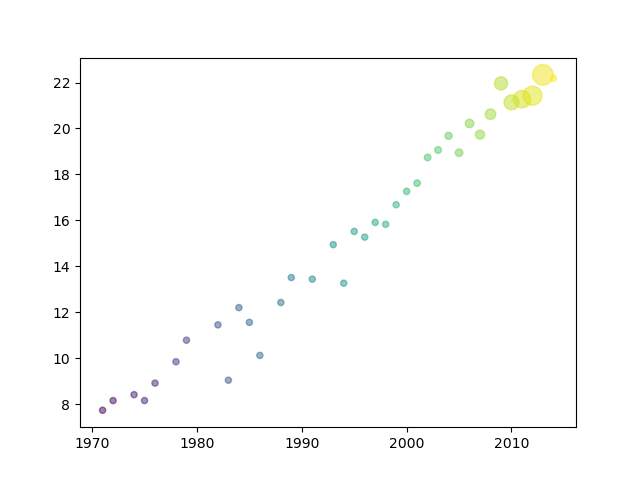

There are actually two different categorical scatter plots in seaborn. Abstract Research Summary We seek to diffuse a graphical toolbinned scatterplotswhich we argue can dramatically improve the quality and speed of research in strategic management. The default representation of the data in catplot() uses a scatterplot.

Remember that this function is a higher-level interface each of the functions above, so we’ll reference them when we show each kind of plot, keeping the more verbose kind-specific API documentation at hand.

In this tutorial, we’ll mostly focus on the figure-level interface, catplot().

The unified API makes it easy to switch between different kinds and see your data from several perspectives. When deciding which to use, you’ll have to think about the question that you want to answer. These families represent the data using different levels of granularity. The plot function will be faster for scatterplots where markers dont vary in size or color. Binning data When the data on the x axis is a continuous value, it can be useful to break it into different bins in order to get a better visualization of the changes in the data. Stripplot() (with kind="strip" the default) It’s helpful to think of the different categorical plot kinds as belonging to three different families, which we’ll discuss in detail below. There are a number of axes-level functions for plotting categorical data in different ways and a figure-level interface, catplot(), that gives unified higher-level access to them. Similar to the relationship between relplot() and either scatterplot() or lineplot(), there are two ways to make these plots. In seaborn, there are several different ways to visualize a relationship involving categorical data. If one of the main variables is “categorical” (divided into discrete groups) it may be helpful to use a more specialized approach to visualization. values : arraylikeon which stats to be calculated. Parameters : arr : arraylikeinput array to be binned. of points in each bin this function computes the sum, mean, median, count or other statistics of the values for each bin. In the examples, we focused on cases where the main relationship was between two numerical variables. As histogram function makes bins and counts the no.
Binned scatter plot python how to#
Grouped_df = df.groupby(bins).In the relational plot tutorial we saw how to use different visual representations to show the relationship between multiple variables in a dataset. Sometimes binning improves accuracy in predictive models. Raw_data_file_path = './Raw_Data_Files/Original_Files/constantEcutsModified'ĭf = pd.read_csv(raw_data_file_path, sep=',', header=None, names=)ĭf = np.sqrt(df**2 + df**2) Image by Author Data binning (or bucketing) groups data in bins (or buckets), in the sense that it replaces values contained into a small interval with a single representative value for that interval. I am struggling however to use this grouped pandas dataframe to produce a scatter plot. I then made a grouped pandas dataframe with the bins and the sum of the intensities that fall within these bins. These bins were created using "cut" from pandas. I've then added another column to this pandas dataframe to give the value of mod(Q). If one of the main variables is categorical (divided. In the examples, we focused on cases where the main relationship was between two numerical variables. I've taken in the data from an external file and put it into a pandas dataframe. Binned scatterplots are a non-parametric method of plotting the conditional expectation function (which describes the average y-value for each x-value). In the relational plot tutorial we saw how to use different visual representations to show the relationship between multiple variables in a dataset. I am then trying to plot a scatter graph of the binned intensities with the position along the mod(Q) axis being the centre of the bins. I am trying to bin data according to the modulus of a Q vector and add up all of the intensities that fall within bins along the mod(Q) axis.


 0 kommentar(er)
0 kommentar(er)
